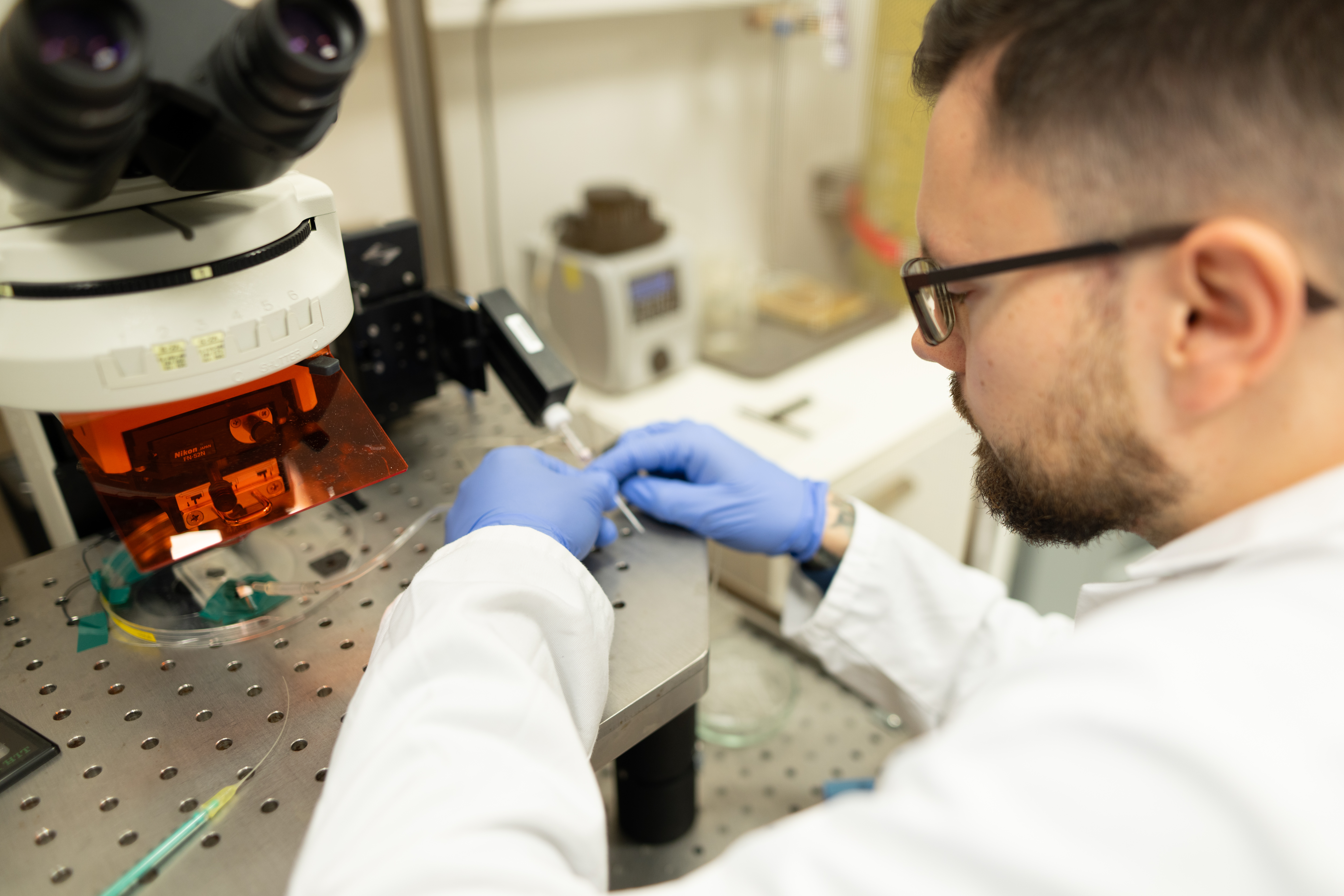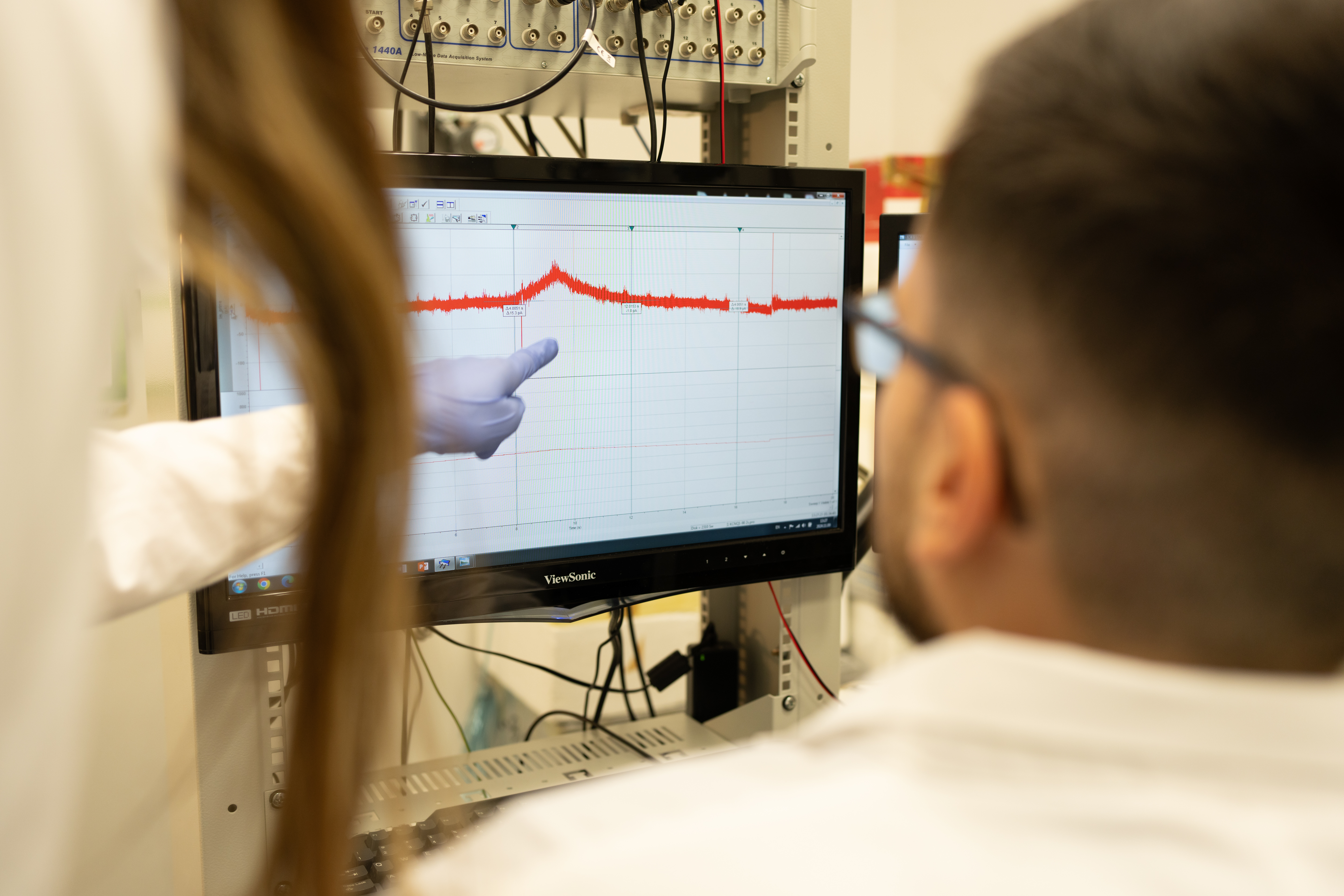Changes in Electrophysiological Properties and Network Connectivity of Neurons During Maturation
Postnatal development in the hippocampus is a critical period for neuronal maturation and the formation of functional neural networks. Disruptions in this process are associated with the development of various pathologies. This research aims to investigate the developmental patterns of electrophysiological properties in hippocampal neurons and to understand the influence of sex and synaptic pruning on these processes. The research involves both male and female wild-type mice, as well as genetically modified mice with impaired synaptic pruning. Electrophysiological activity of hippocampal neurons are analyzed using intracellular recording techniques.
The study is conducted in collaboration with Prof. Urtė Neniškytė’s group at Vilnius University Life Sciences Center (VU LSC), and is carried out by biophysics PhD student Igor Nagula.
 |
 |
Impact of Mutations on the Functional Properties of Ion Channels
Mutations in ion channels can significantly affect the functioning of the heart, brain, and various other physiological systems. This study aims to determine how a KCNQ1 channel mutation—associated with Long QT Syndrome and identified in the Lithuanian population—affects the channel’s conductance and activation properties. In parallel, we are searching for compounds with therapeutic potential that could mitigate the impact of this mutation. HEK293 cell lines are transfected with either wild-type or mutant KCNQ1 channels, along with fluorescent markers. Ionic currents are recorded using intracellular recording techniques.
The study is conducted in collaboration with the research groups of Dr. A. Sasnauskienė (Vilnius University LSC) and Dr. A. Nowaczyk (Nicolaus Copernicus University, Poland). The research is carried out by biophysics PhD student Anastasiia Shelest.
 |
 |
Investigation of Long-Term Synaptic Potentiation Mechanisms Using Mathematical Modeling
The formation of long-term memory, defined as changes in synaptic strength between neurons, has been linked to the nitric oxide (NO) signaling pathway. However, the precise role of NO in memory formation remains unclear. Experimental studies in this area are challenged by the diversity of biological models and individual neurons, as well as inherent variability. This research uses mathematical modeling to explore how both NO-dependent and other molecular signaling pathways contribute to positive and negative feedback mechanisms affecting synaptic strength—and, consequently, memory formation.
